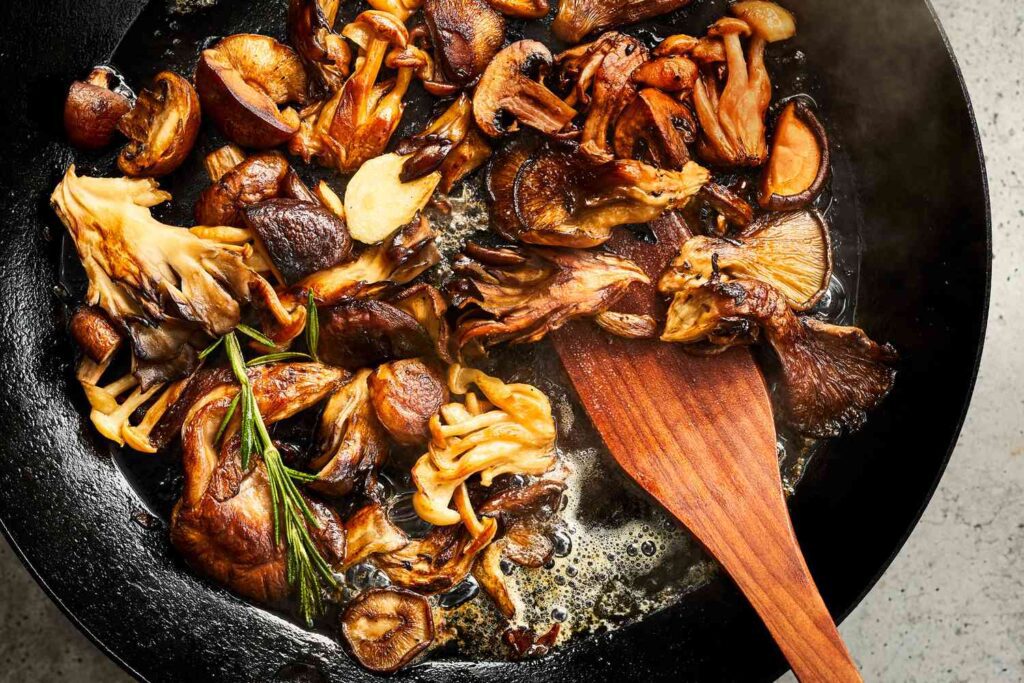Sautéing is a cooking technique where food is quickly cooked over high heat in a small amount of fat. To master sautéing, you must choose a shallow pan with straight or sloping sides made of stainless steel, copper or aluminum. Prepping your ingredients by cutting them into small, uniform pieces, patting dry dry ingredients, using a fat with a high smoke point, getting the temperature right, adding food in small batches, tossing the food, deglaze the pan to make a simple sauce and cleaning the pan gently with soapy water are key techniques to master.
Get Saucy: Essential Techniques for Perfect Sautéing Every Time
Introduction
Sautéing is a popular cooking technique that involves cooking food quickly over high heat in a small amount of fat, typically in a sauté pan. The end result is a delicious, flavorful dish that is quick and easy to make. However, sautéing can be daunting for beginners. With a few essential techniques, even new cooks can learn to sauté like a pro.
Choosing the Right Pan
One of the keys to successful sautéing is choosing the right pan. A sauté pan is a shallow, wide pan with straight or sloping sides that allow for easy tossing and stirring. A pan made of stainless steel, copper or aluminum is recommended, as they conduct heat well. Non-stick pans are not ideal for sautéing, as they can’t be heated to as high a temperature and don’t develop fond, the brown bits stuck to the bottom of the pan which add flavor to the dish.
Prepping Your Ingredients
Prepping your ingredients ahead of time is crucial for successful sautéing. Start by cutting your proteins and vegetables into uniform pieces. Small pieces cook faster and evenly, ensuring that everything will be cooked through at the same time. Dry ingredients such as meats, seafood and tofu should be patted dry with paper towels to get rid of excess moisture which can result in steaming instead of sautéing.
Getting the Temperature Right
To sauté food properly, you need to cook it over high heat. A temperature of 375-400°F is ideal. The pan should be hot before you add the food. Test the temperature by adding a small piece of food to the pan. If it sizzles and browns quickly, add the rest of the food to the pan.
Adding the Fat
A small amount of fat is required for sautéing, usually one to two tablespoons. The fat will coat the pan, allowing the food to cook evenly without sticking. The best fats for sautéing are those with high smoke points such as clarified butter, vegetable, canola, or grapeseed oil.
Adding the Food
Once the pan and fat are hot, it’s time to add the food. Add the food in small batches, making sure each piece is in contact with the pan. To ensure even cooking, arrange the pieces in a single layer and don’t overcrowd the pan. Overcrowding the pan will result in steaming instead of sautéing. Let the food cook without moving it for a minute or two to develop a crust before tossing it.
Tossing the Food
To toss the food, hold the pan handle with one hand and use the other hand to toss using a quick, sweeping motion. Be careful not to overdo it, as too much tossing can result in the food sticking together. Sauté the food until it’s cooked to your liking. Meat, poultry, and seafood should be cooked until they reach an internal temperature of 165°F.
Deglazing the Pan
Once the food is cooked, remove it from the pan, leaving behind the brown bits. These bits are fond, and they’re full of flavor. To make a simple pan sauce, deglaze the pan by adding a liquid such as water, wine, or broth to the pan and scraping up the fond with a spatula. Once the liquid has reduced by half, add butter, cream, or other seasonings to create a delicious sauce.
Cleaning the Pan
Cleaning a sauté pan is easy. Once it has cooled down, wash it gently with warm soapy water, using a sponge or non-abrasive scrubber. If the pan has stuck on bits, scrub them off with baking soda and hot water. Never use harsh or abrasive cleaners or steel wool, as they can scratch the pan.
Conclusion
Learning how to sauté properly is an essential kitchen skill that can be mastered with practice. By following these tips, you can create delicious, flavorful, and healthy meals that will impress your family and friends. Remember to choose the right pan, prep your ingredients, get the temperature, add the right amount of fat, add the food in small batches, toss and cook until done, deglaze the pan, and clean the pan with care. Happy sautéing!
